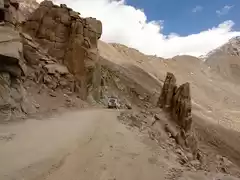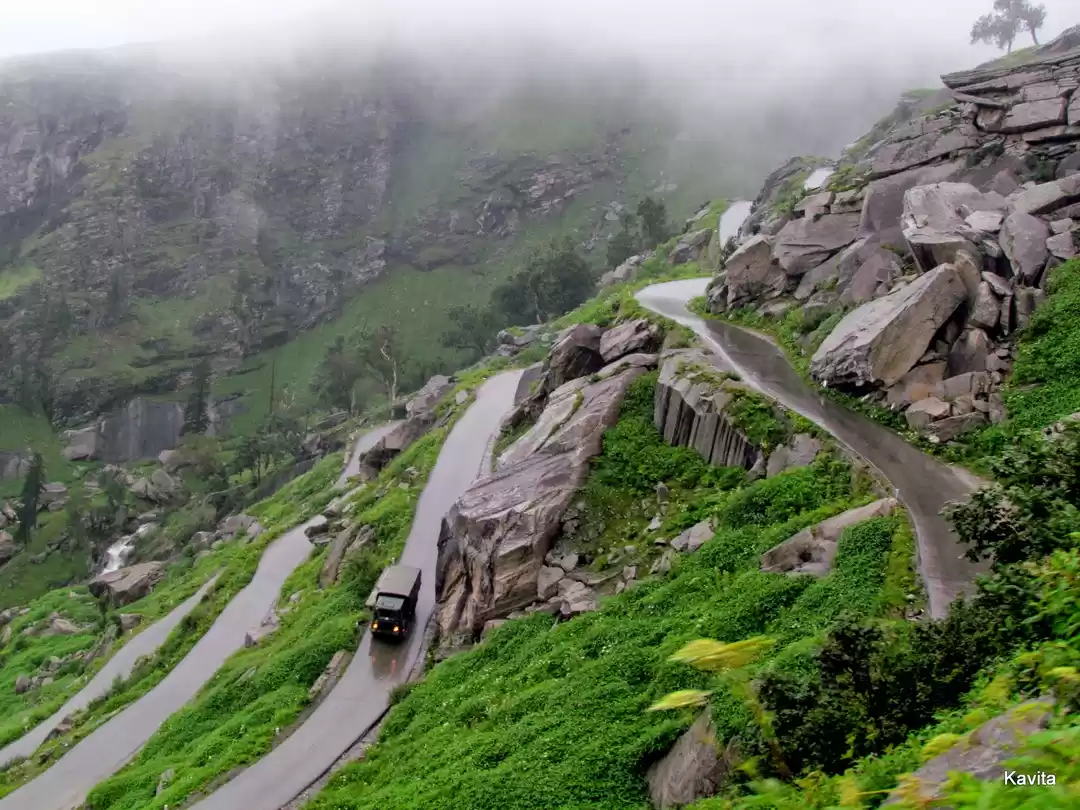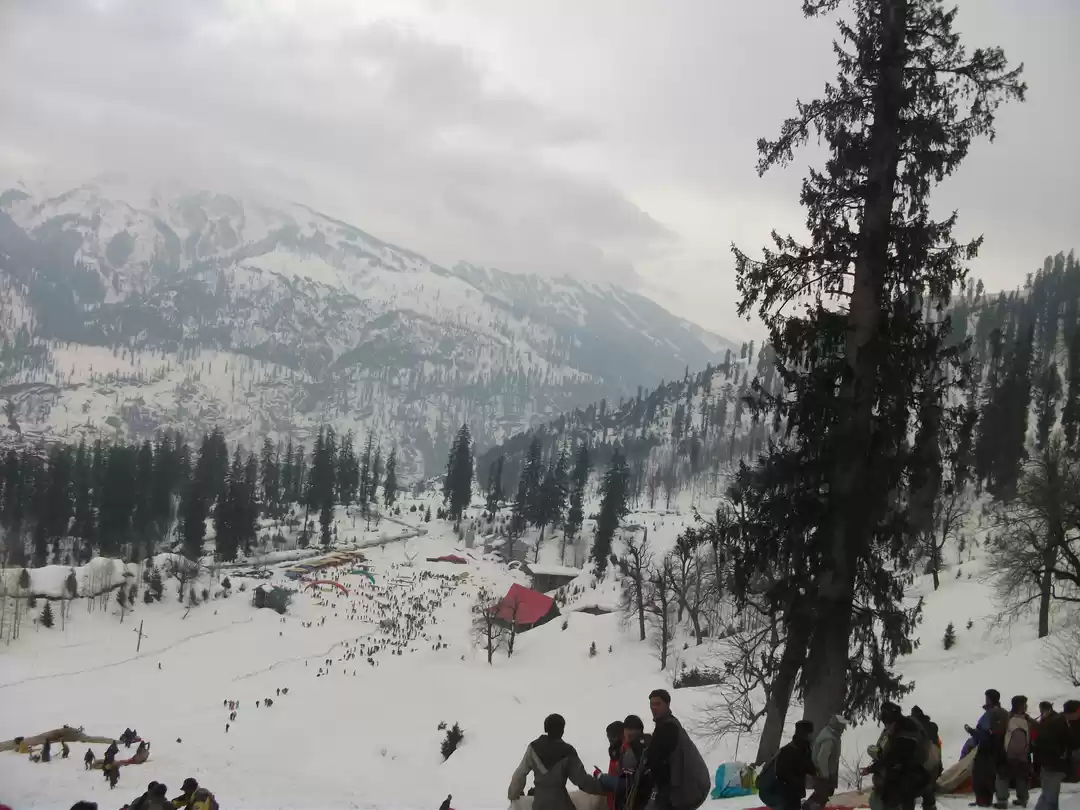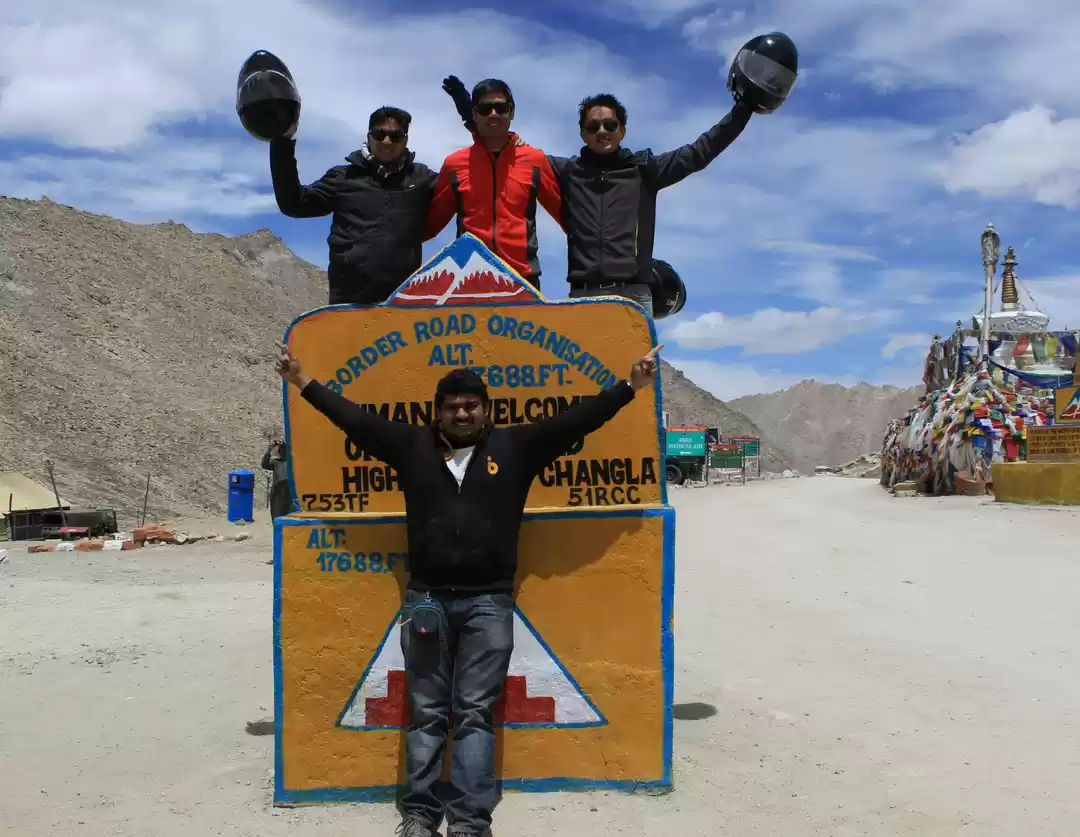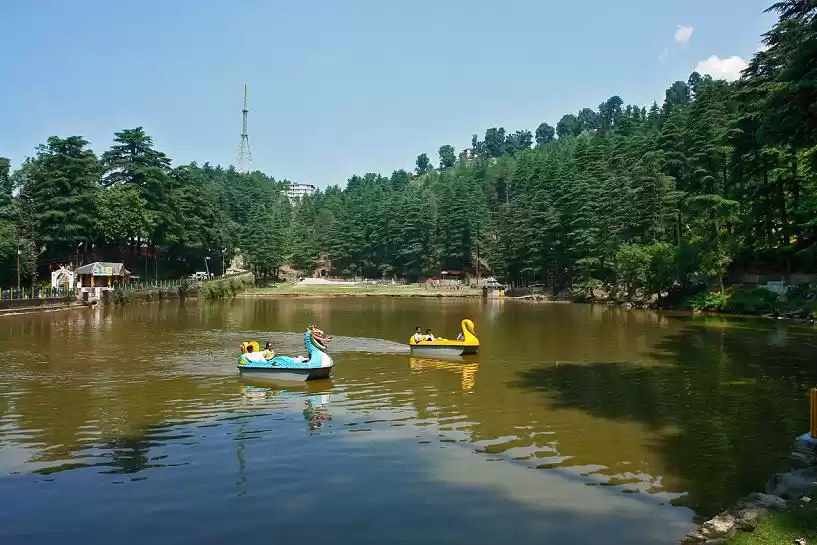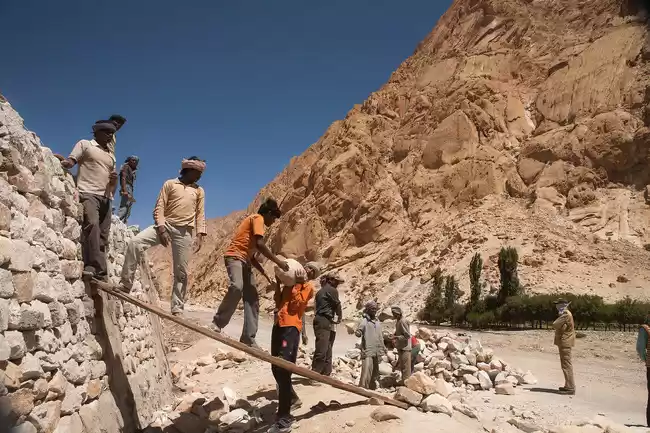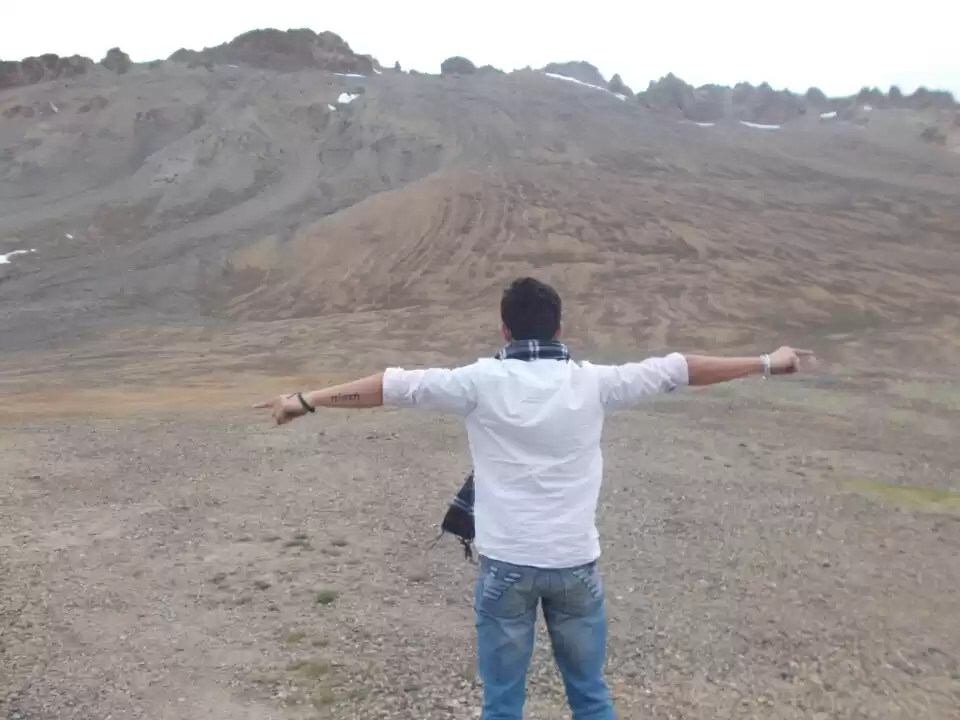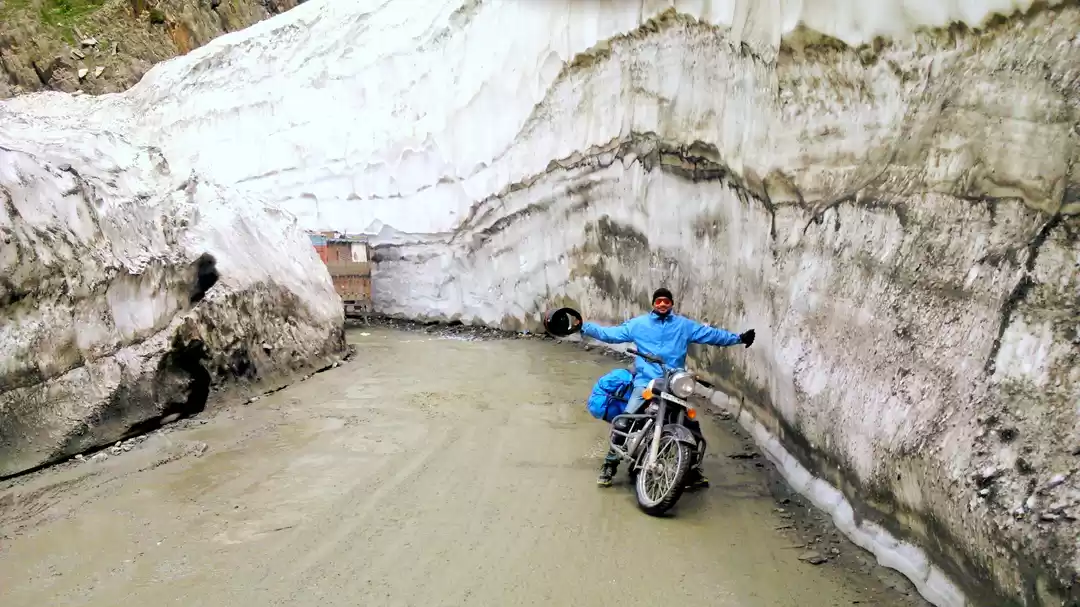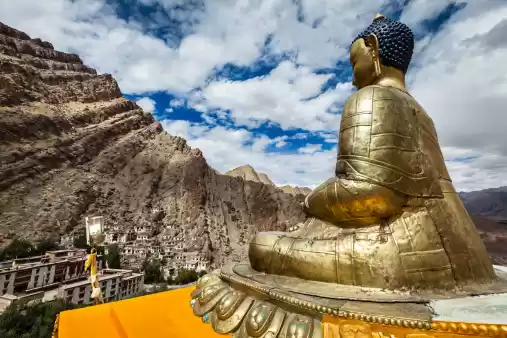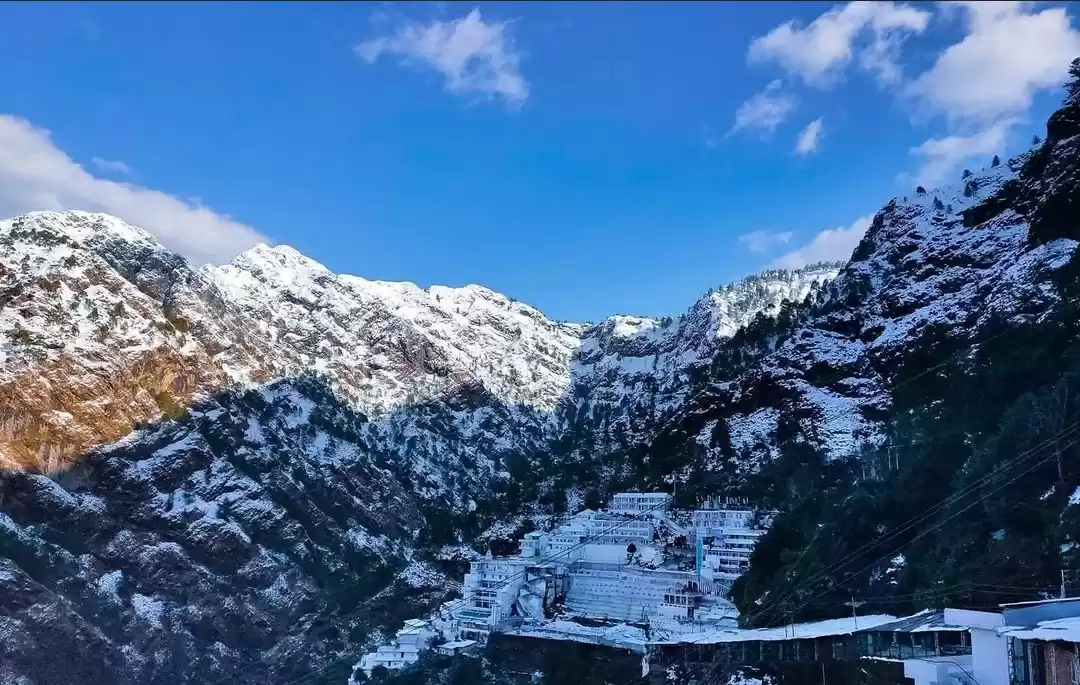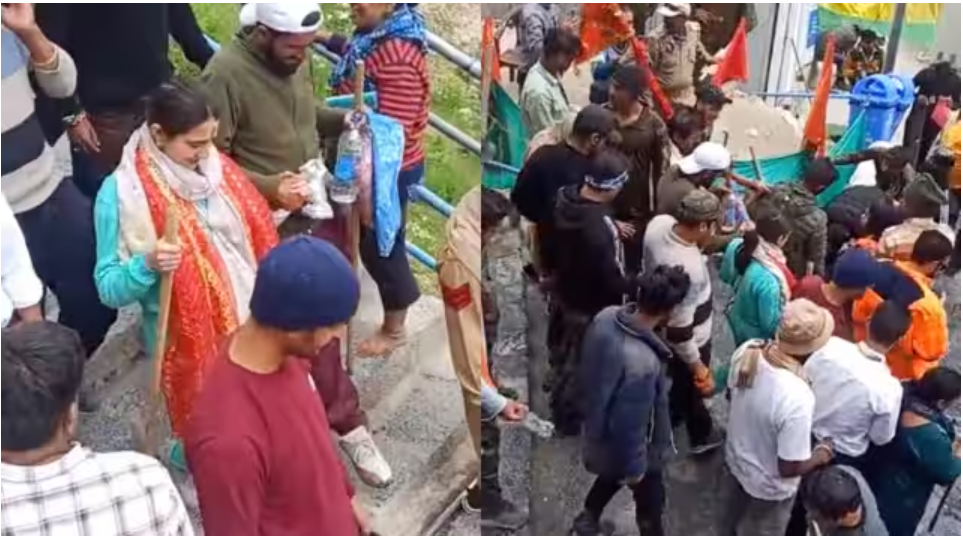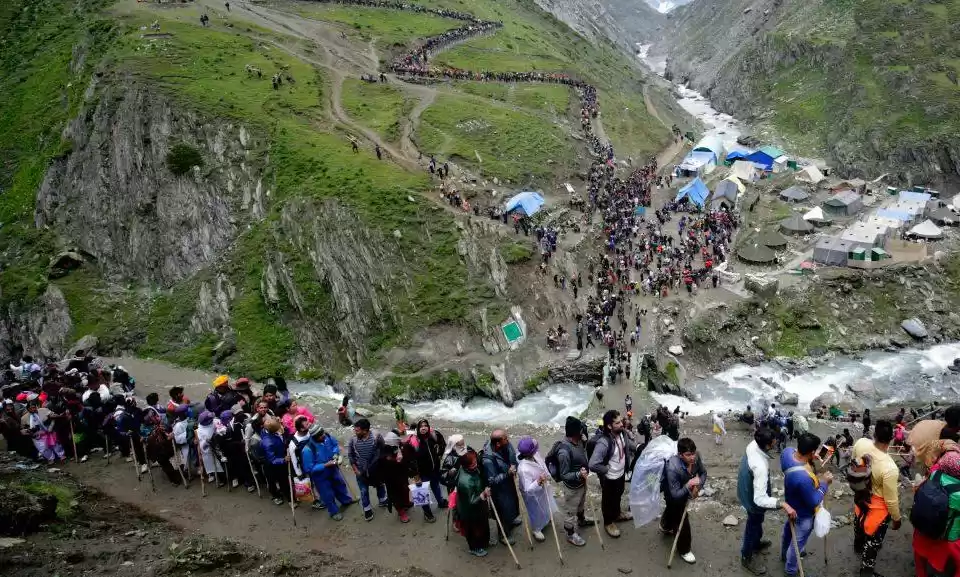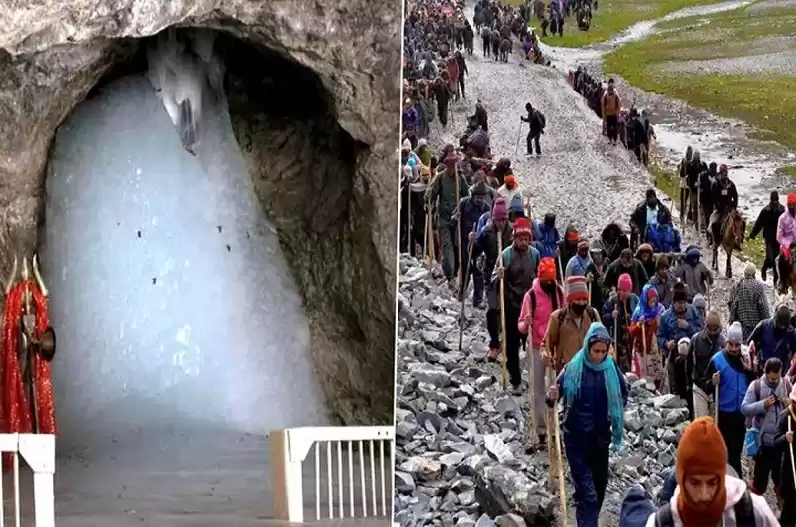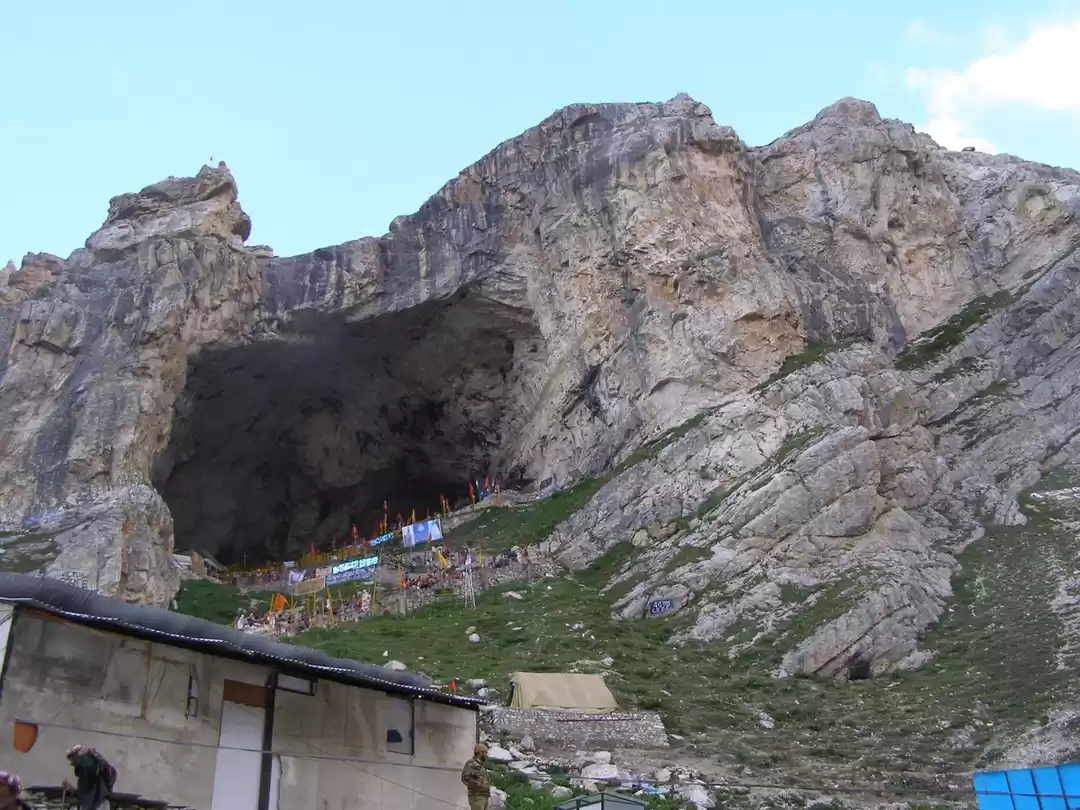Have you ever wondered what it would be like to walk on the footsteps of Lord Shiva, the supreme deity of Hinduism? To witness the miraculous phenomenon of a natural ice formation that resembles his iconic symbol, the Shiva linga? To experience the bliss and tranquility of being in his presence, surrounded by the majestic Himalayas?
If you have, then you should definitely plan a trip to Amarnath, one of the most sacred and revered pilgrimage sites for Hindus. Located at an altitude of 3,888 metres in the state of Jammu and Kashmir, Amarnath is a holy cave that houses the Shiva linga, which is formed by the freezing of water droplets from the roof of the cave. The Shiva linga reaches its maximum size during the months of July and August, which coincides with the auspicious Shravan month of the Hindu calendar. This is when thousands of devotees undertake the arduous trek to the cave, braving the harsh weather and terrain, to seek the blessings of Lord Shiva.
The pilgrimage to Amarnath, also known as Amarnath Yatra, is not only a test of faith and devotion, but also a journey of discovery and adventure. It offers a chance to witness the scenic beauty, natural wonders, and cultural diversity of the region, as well as to learn about the history and mythology of the cave and the Shiva linga. Whether you are a spiritual seeker, a nature lover, or an adrenaline junkie, Amarnath Yatra has something for everyone.
In this article, we will tell you everything you need to know about Amarnath Yatra, from how to plan your trip, what to expect during the trek, and how to make the most of your experience. We will also share some tips and tricks from our experts and travellers who have completed the journey. So, read on and get ready to embark on a divine journey to the abode of Lord Shiva with Tripoto.

How to Plan Your Amarnath Yatra
The first step to planning your Amarnath Yatra is to register yourself for the pilgrimage. The registration process is managed by the Shri Amarnathji Shrine Board (SASB), the body that oversees the holy shrine and the yatra. You can register online or offline, by filling up a form and submitting a medical certificate and a photo ID proof. The registration fee is Rs. 50 per person, and you can choose your preferred date and route for the yatra. The registration opens in April and closes in July, or whenever the quota is full. You can check the availability of slots and the status of your registration on the SASB website.
The next step is to decide which route you want to take to reach the Holy Cave. There are two routes to choose from: Srinagar-Baltal and Pahalgam-Chandanwari. Both routes are about 14 km long and take about two days to complete. However, they differ in terms of difficulty, scenery, and facilities. Here is a brief comparison of the two routes:
Srinagar-Baltal: This route is shorter and steeper, and is suitable for those who are physically fit and have less time. It starts from Baltal, which is about 95 km from Srinagar, the capital city of Jammu and Kashmir. From Baltal, you can either trek or take a helicopter to the Holy Cave. The trek takes about 6 to 8 hours, and passes through some steep slopes and narrow paths. The helicopter takes about 15 minutes, and costs Rs. 1,800 per person. The advantage of this route is that it offers a panoramic view of the snow-capped mountains and the glaciers. The disadvantage is that it has fewer facilities and campsites, and is more crowded and prone to landslides.
Pahalgam-Chandanwari: This route is longer and gentler, and is suitable for those who are looking for a more scenic and comfortable experience. It starts from Chandanwari, which is about 16 km from Pahalgam, a picturesque hill station in Jammu and Kashmir. From Chandanwari, you have to trek to the Holy Cave, as there is no helicopter service available. The trek takes about two days, and passes through some beautiful valleys, meadows, and lakes. The advantage of this route is that it has more facilities and campsites, and is less crowded and safer. The disadvantage is that it is more expensive and time-consuming, and requires more stamina and endurance.
The final step is to prepare for the trek, by packing the essentials, wearing the appropriate clothes, and eating the right food. Here are some tips and tricks to help you with this step:
- Pack light and smart, by carrying only the essentials, such as water, snacks, medicines, torch, raincoat, etc. You can also hire a porter or a pony to carry your luggage, but make sure to negotiate the price beforehand.
- Wear comfortable and warm clothes, such as woolen socks, gloves, cap, jacket, etc. You can also buy or rent these items from the local shops or campsites, but make sure to check the quality and hygiene.
- Eat light and healthy food, such as fruits, nuts, biscuits, etc. Avoid oily, spicy, and heavy food, as they may cause indigestion, nausea, or vomiting. You can also buy or get free food from the local stalls or langars, but make sure to check the freshness and cleanliness.
- Drink plenty of water, but avoid drinking from the streams or ponds, as they may be contaminated. You can also buy or get free water from the local stalls or campsites, but make sure to check the purity and seal.
- Acclimatize yourself to the high altitude, by taking frequent breaks, breathing deeply, and avoiding alcohol, tobacco, or drugs. You can also take medicines such as Diamox or Aspirin, but only after consulting a doctor.
What to Expect During Your Amarnath Yatra
Once you have planned your Amarnath Yatra, you are ready to experience the thrill and joy of the trek. The trek is not only a physical challenge, but also a spiritual and emotional journey. It offers a chance to witness the scenic beauty, natural wonders, and cultural diversity of the region, as well as to learn about the history and mythology of the cave and the Shiva linga. Here are some of the highlights of the trek that you can look forward to:
The Scenic Beauty: The trek to Amarnath is a feast for the eyes, as you get to see the stunning landscapes of the Himalayas, such as the snow-capped peaks, the glaciers, the valleys, the meadows, and the lakes. The trek also offers a glimpse of the rich flora and fauna of the region, such as the alpine flowers, the pine trees, the deodar trees, the wild berries, the marmots, the bears, and the birds. The trek is especially beautiful during the sunrise and the sunset, when the sky and the mountains are painted in different hues of orange, pink, and purple.
The Natural Wonders: The trek to Amarnath is a marvel of nature, as you get to see the miraculous phenomenon of the Shiva linga, which is formed by the freezing of water droplets from the roof of the cave. The Shiva linga is believed to be the manifestation of Lord Shiva, and changes its size and shape according to the phases of the moon. The Shiva linga reaches its maximum size on the full moon day, which is also the most auspicious day to visit the cave. The cave also houses two other ice formations, which represent Goddess Parvati, the consort of Lord Shiva, and Lord Ganesha, their son. The cave is also surrounded by other natural wonders, such as the Amarnath Glacier, the Amarnath Lake, and the Amarnath Peak.
The Cultural Diversity: The trek to Amarnath is a celebration of the cultural diversity of the region, as you get to meet and interact with people from different backgrounds, religions, and regions. The trek also offers a chance to witness and participate in the various rituals and ceremonies that are performed by the pilgrims, such as the puja, the aarti, the prasad, the bhajan, etc. The trek also showcases the hospitality and generosity of the local people, who provide free food, water, shelter, and medical assistance to the pilgrims. The trek also exposes you to the history and mythology of the cave and the Shiva linga, which are narrated by the guides, the priests, and the locals.
How to Make the Most of Your Amarnath Yatra
The trek to Amarnath is not only a once-in-a-lifetime opportunity, but also a life-changing experience. It is a journey that can transform you in many ways, such as enhancing your faith, enriching your knowledge, strengthening your bond, and improving your health. Here are some ways to make the most of your Amarnath Yatra:
Enhance your faith: The trek to Amarnath is a way to express your devotion and gratitude to Lord Shiva, who is the source of all creation, destruction, and regeneration. You can enhance your faith by chanting his names, meditating on his form, offering prayers and flowers, and seeking his blessings. You can also learn more about his attributes, stories, and teachings, and apply them to your life. You can also experience his grace and protection, as he guides you through the challenges and obstacles of the trek.
Enrich your knowledge: The trek to Amarnath is a way to expand your knowledge and awareness of the world, as you get to see and learn about the diverse aspects of nature, culture, and history. You can enrich your knowledge by observing and appreciating the beauty and wonder of the Himalayas, the glaciers, the valleys, and the lakes. You can also learn about the flora and fauna of the region, and how they adapt to the harsh environment. You can also discover the history and mythology of the cave and the Shiva linga, and how they are connected to the ancient scriptures and legends.
Strengthen your bond: The trek to Amarnath is a way to strengthen your bond with your family, friends, and fellow travellers, as you share the joys and sorrows of the journey. You can strengthen your bond by supporting and encouraging each other, by sharing your stories and experiences, by celebrating your achievements and milestones, and by expressing your gratitude and love. You can also make new friends and connections, as you meet and interact with people from different backgrounds, religions, and regions, and learn from their perspectives and insights.
Improve your health: The trek to Amarnath is a way to improve your health and fitness, as you challenge your physical and mental limits. You can improve your health by exercising your muscles, lungs, and heart, by burning calories and fat, by boosting your immunity and metabolism, and by reducing stress and anxiety. You can also improve your mental health by enhancing your focus, concentration, and memory, by increasing your confidence and self-esteem, by developing your resilience and perseverance, and by cultivating a positive and optimistic attitude.
Conclusion
The trek to Amarnath is a divine journey to the abode of Lord Shiva, where you can witness the miraculous phenomenon of the Shiva linga, and experience the bliss and tranquility of being in his presence. It is also a journey of discovery and adventure, where you can witness the scenic beauty, natural wonders, and cultural diversity of the region, and learn about the history and mythology of the cave and the Shiva linga.
It is also a journey of transformation and growth, where you can enhance your faith, enrich your knowledge, strengthen your bond, and improve your health.

























